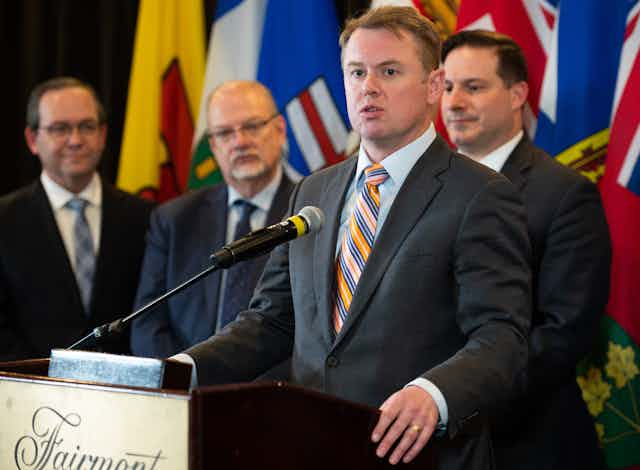Over four decades ago — on April 17, 1982 — Queen Elizabeth signed the Constitution Act, which included the Canadian Charter of Rights and Freedoms.
The Charter enshrined — and therefore placed outside the reach of capricious lawmaking — certain fundamental rights and freedoms guaranteed to all Canadians. The right to reasonable bail is among them.
The right to bail recognizes that the state is constitutionally burdened with establishing an accused person’s guilt before unduly or unjustly denying or abridging their right to liberty, especially in reaction to short-term public outrage.
Canadians should consider the collateral consequences of pre-trial detention, including job loss, stigmatization, family breakdown and homelessness. Also, when denied bail, research shows accused people are more likely to enter into rash and ill-advised plea bargains or plead guilty despite having a viable defence.
A disturbing number of inmates in provincial detention institutions have either been denied bail or are awaiting a bail hearing. These inmates often face egregious prison realities, ranging from draconian lockdown policies to a lack of meaningful access to legal counsel and basic hygiene.
The often overlooked problem with Canada’s bail system is not the laws surrounding bail, per se, but the need to ensure that criminally accused people receive fair access to bail — and that those who receive bail have the necessary opportunities to thrive while they await trial.
Concerns about bail
In the aftermath of the shooting death of Ontario Provincial Police Const. Grzegorz Pierzchala, allegedly by a young Indigenous man out on bail, all 13 premiers called on Prime Minister Justin Trudeau to strengthen Canada’s bail system.
In response to their concerns, the Parliamentary standing committee on justice and human rights is currently studying the bail system.

Bail is often regarded by accused people and their lawyers to be an act of judicial and prosecutorial benevolence or leniency. But it’s increasingly used as a proxy for punishment, advancing tough-on-crime political agendas and stirring up hysteria around public safety.
Canadians must be mindful of political rhetoric around bail reform and instead closely consider the negative implications that a “tougher” bail system has on constitutional rights and the lives of marginalized and racialized accused people.
In fact, the Supreme Court of Canada has warned lower courts to avoid relying on factors extraneous to the bail system in determining who gets bail. These factors can take the form of entrenched attitudes around race and risk.
How we come to know and construct risk and, more importantly, how risk is often associated with race are all salient questions that require careful examination.
‘The evil of racism’
The relationship between risk construction and apportionment of blame is closely tied to race. Scholars have even argued that discussions on risk prevention — and I would add risk management and mitigation — cannot be separated from race.
That means those considering who gets bail must reflect on their own beliefs and show restraint as they determine risk to avoid relying on false racist narratives — for example, that Black and Indigenous people are dangerous and risk-prone.
Thirty years ago, Ontario’s Court of Appeal observed in R v Parks that examined the manslaughter conviction of a Black drug dealer accused of killing a white drug user:
“Racism, and in particular anti-Black racism, is a part of our community’s psyche… Furthermore, our institutions, including the criminal justice system, reflect and perpetuate those negative stereotypes. These elements combine to infect our society as a whole with the evil of racism. Blacks are among the primary victims of that evil.”
Unfortunately, voluminous social science research suggests this observation is as relevant today as it was three decades ago. The data also suggests that institutionalized racism, particularly within the criminal justice system, is difficult, if not impossible, to remedy.
However, to the Supreme Court of Canada’s credit, recent bail decisions like R v Antic have signalled to bail jurists, Crown prosecutors and lawmakers to take a less punitive and carceral approach to bail.
In this case — involving a Windsor, Ont., man charged with drug and firearms offences and denied bail — the court emphasized the importance of ensuring imprisonment is used as a last resort.
It ruled he was erroneously denied bail, reinforcing that accused people are constitutionally presumed innocent and should benefit from a constitutional right to bail — and that there is a constitutional right not to be denied bail without just cause.

Other Supreme Court decisions
In fact, for years, at least since the Supreme Court’s 1992 decision in R v Pearson, the constitutionality of reverse onus provisions have been discussed.
In a reverse onus situation, it’s presumed that accused people should be detained while awaiting trial unless they can demonstrate to the court that there’s no just cause for their detention.
The Pearson ruling involved the case of a convicted drug trafficker. It established that while reverse onus provisions are an affront to the constitutional rights of Canadians, they can be enabled by Sec. 1 of the Charter, which guarantees rights and freedoms subject “only to such reasonable limits prescribed by law as can be demonstrably justified in a free and democratic society.”
Nonetheless, a less punitive and carceral approach to bail is wise — any erosion of Canadians’ constitutional rights threatens the integrity and the long-term repute of the justice system.
The Supreme Court is seeking to balance the liberty of those accused of crimes and other constitutional rights — for example, the presumption of innocence and the right to reasonable bail — with the concern about the risk accused people may pose to public safety.
But despite its careful interpretations, bail remains a highly political and legally charged process in terms of public perceptions.

